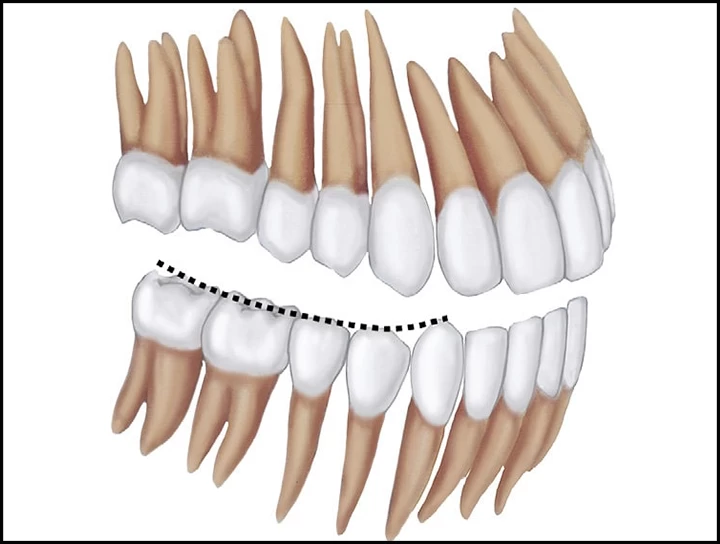
The Curve of Spee is a naturally occurring phenomenon, originally described by Ferdinand Graf von Spee in the 19th Century. The curve of Spee refers to the arc of a curved plane that is tangent to the incisal edges and the buccal cusp tip of the mandibular dentition viewed in the sagittal plane. It is absent in the primary dentition, however when the 1st molars erupt there is a significant increase in the curve. After the eruption of the second molars the curve of Spee remains relatively stable into adulthood (Marshall, 2008). Controversy exists over how much, and even if space is required to level a curve of Spee. Initially it was believed there was a ratio of 1:1, i.e. for every 1mm depth of curve, 1mm was required (Baldridge, 1969). However, this linear relationship proved to not be accurate, and a series of experimental and clinical studies showed less space was needed, but more importantly that other factors were found to be at play i.e 3D curve, tooth anatomy and the tip of posterior teeth. We should flatten the curve to achieve - Proper biomechanical function, muscular balance, resist the forces of occlusion, key to normal occlusion and for the normal functional movement of the mandible. There are three main methods for levelling the curve of Spee: Anterior intrusion, continuous arch wire / reverse curve of Spee and posterior extrusion. Curve of Spee is normal, ranging from flat to mild curvature (2mm in adults). Cases should be examined carefully and assessed individually for the best use of mechanics according to each patient’s unique malocclusion. Corrected Curve of spee in either Class I or Class II malocclusions usually require retention in a vertical plane i.e moderate retention.


No Any Replies to “CURVE OF SPEE”
Leave a Reply